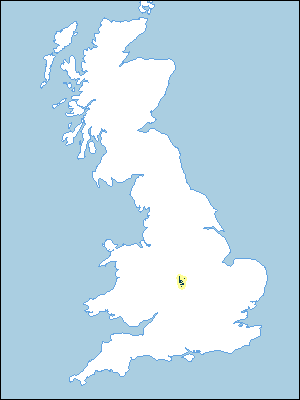
Soil Associations
0572e WHIMPLE 2
Soil and site characteristics
Reddish fine loamy over clayey soils with slowly permeable subsoils and slight seasonal waterlogging. Associated well drained deep coarse loamy soils.
Geology
Drift over Carboniferous reddish mudstone and sandstone
Cropping and Land Use
Winter cereals and short term grassland, some spring barley and potatoes on lighter land.
Component soil series
| Subgroup | Series name | Percentage | WRB 2006 link |
|---|---|---|---|
| 5.72 | WHIMPLE | 65% | Chromic Endostagnic Luvisols |
| 5.41 | BROMSGROVE | 20% | Eutric Chromic Endoleptic Cambisols |
Covers 144 km2 in England and Wales
Soilscapes Classification
| 8 |
Slightly acid loamy and clayey soils with impeded drainage |
0572e WHIMPLE 2
Detailed Description
This association, on gentle to moderate slopes, is mapped between Atherstone, Rugby, Leamington Spa and Birmingham on reddish clay shales, mudstones and interbedded sandstones. The Whimple series comprises fine loamy or fine silty over clayey stagnogleyic argillic brown earths and covers over two-thirds of the association. It is associated with coarse loamy Bromsgrove series, typical brown earths, which occurs on narrow resistant sandstone bands giving steeper slopes. Near Kenilworth thin bands of sandstone give a proportion of Hodnet soils some of which, on Carboniferous rocks, have previously been called Kenilworth series by Beard (1984). Small patches of Dunnington Heath soils are locally important. Eardiston soils occur in places on eroded sandstone ridges, along the edges of which some Brockhurst soils are found in low-lying receiving sites.
Soil Water Regime
The Whimple series has a slowly permeable subsoil and suffers from slight waterlogging in winter (Wetness Class III), but has a drier regime (Wetness Class II) in districts with less than 150 field capacity days. Disposal of excess winter rainfall occurs as downward percolation and lateral flow.The Bromsgrove series is well drained (Wetness Class I) and excess water drains rapidly into the porous bedrock. The soils accept most winter rainwater.
Cropping and Land Use
With efficient underdrainage and careful management, the land will grow moderately good crops of cereals and grass. Autumn-sown cereals and oilseed rape are preferred because there are few days when the land can be safely worked in spring, though some spring barley is grown on Bromsgrove soils. Some potatoes are grown but require irrigation in most years for good yields. On Whimple and similar soils, cultivations should be carefully timed to avoid structural damage. The soils are slightly droughty for most crops but moderately droughty for potatoes. Because of the large sand content and weak surface structure of Bromsgrove soils, they are susceptible to capping and erosion on recently ploughed or sparsely vegetated fields, especially where organic matter contents are small. Ley grassland usually forms part of the crop rotation and cattle and sheep rearing are an integral part of the farming system. There is some permanent grassland locally in wet districts. Whimple soils suffer structural damage if the land is stocked in late autumn or early spring, particularly on short-term leys which have lower surface bearing strengths than permanent or long-term grassland. The good natural drainage of the Bromsgrove soils ensures a minimum risk of poaching and allows the ground to warm up earlier than the surrounding Whimple soils. This also promotes grass growth and an extended growing season. Whimple soils have a moderate to high base status and nutrients are not readily leached. Upper horizons are often slightly acid but the subsoil is normally neutral or alkaline, especially where the underlying mudstone is calcareous. Potassium and magnesium reserves are adequate for most crops. The Bromsgrove soils are naturally acid with a moderate or low base status. Soluble nutrients and lime leach rapidly from upper horizons, and fertility status requires regular monitoring.
0572e WHIMPLE 2
Distribution Map
 |
Note that the yellow shading represents a buffer to highlight the location of very small areas of the association.
Keys to component soil series
Midlands
 |
All information Copyright, Cranfield University © 2024
Citation: To use information from this web resource in your work, please cite this as follows:
Cranfield University 2024. The Soils Guide. Available: www.landis.org.uk. Cranfield University, UK. Last accessed 26/04/2024
